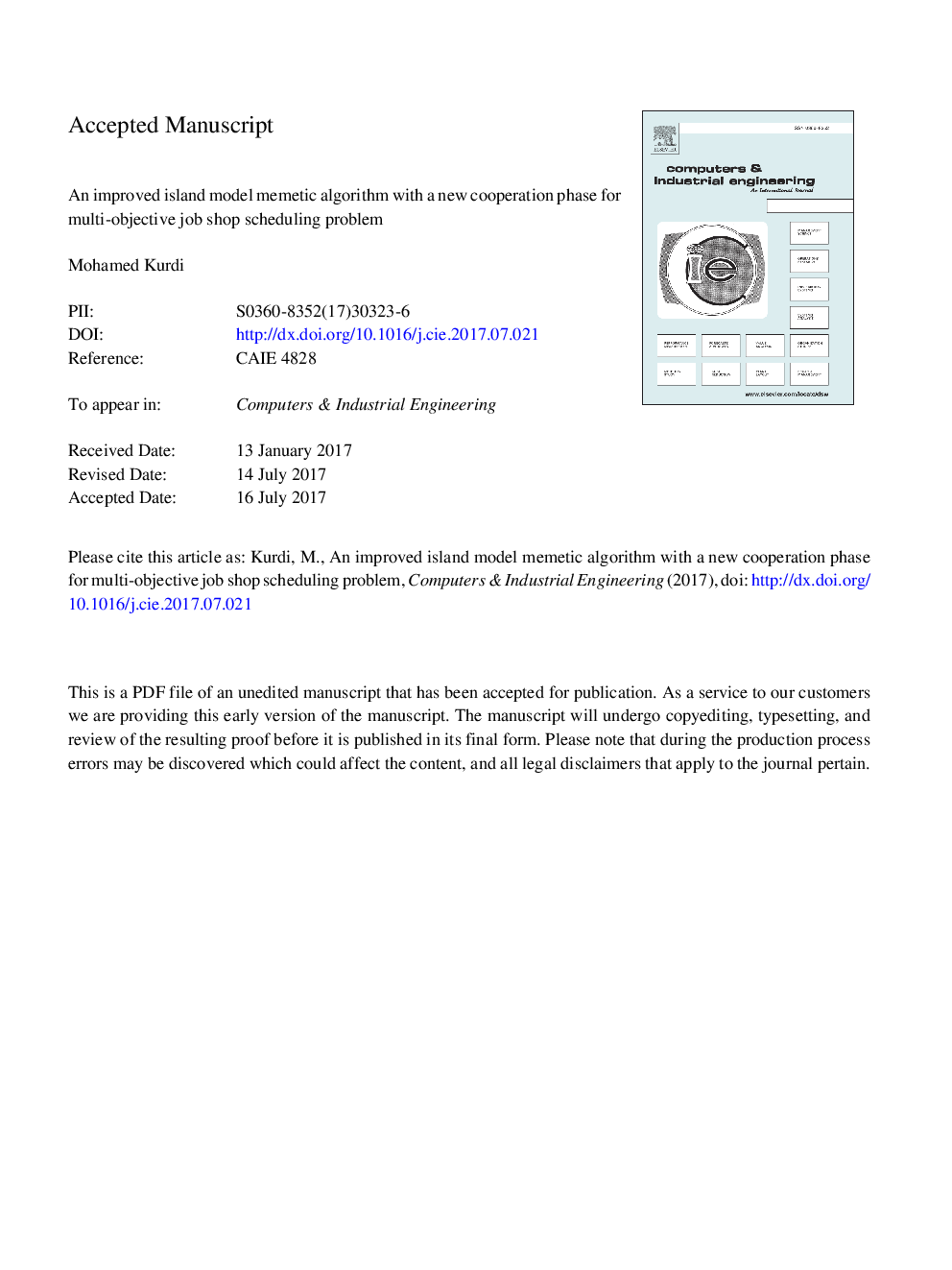ترجمه فارسی عنوان مقاله
یک الگوریتم مدل ممتازی جزیره بهبود یافته با یک مرحله همکاری جدید برای مشکل زمانبندی کارخانه چند هدفه
عنوان انگلیسی
An improved island model memetic algorithm with a new cooperation phase for multi-objective job shop scheduling problem
| کد مقاله | سال انتشار | تعداد صفحات مقاله انگلیسی |
|---|---|---|
| 105599 | 2017 | 54 صفحه PDF |
منبع

Publisher : Elsevier - Science Direct (الزویر - ساینس دایرکت)
Journal : Computers & Industrial Engineering, Volume 111, September 2017, Pages 183-201

